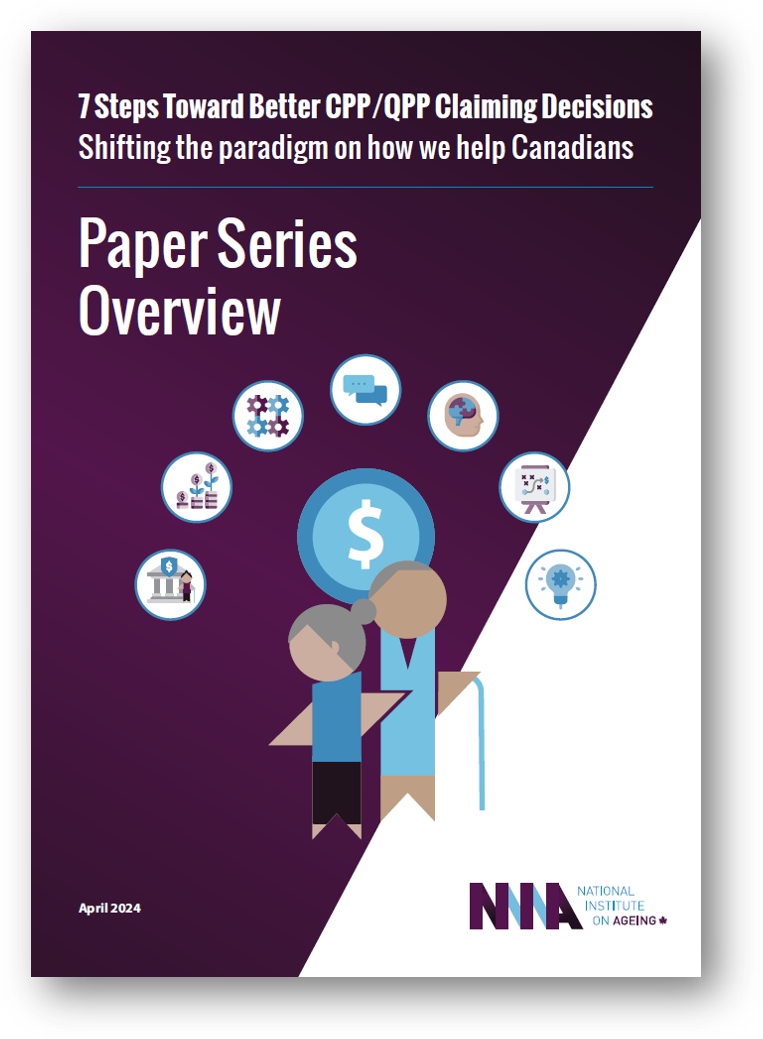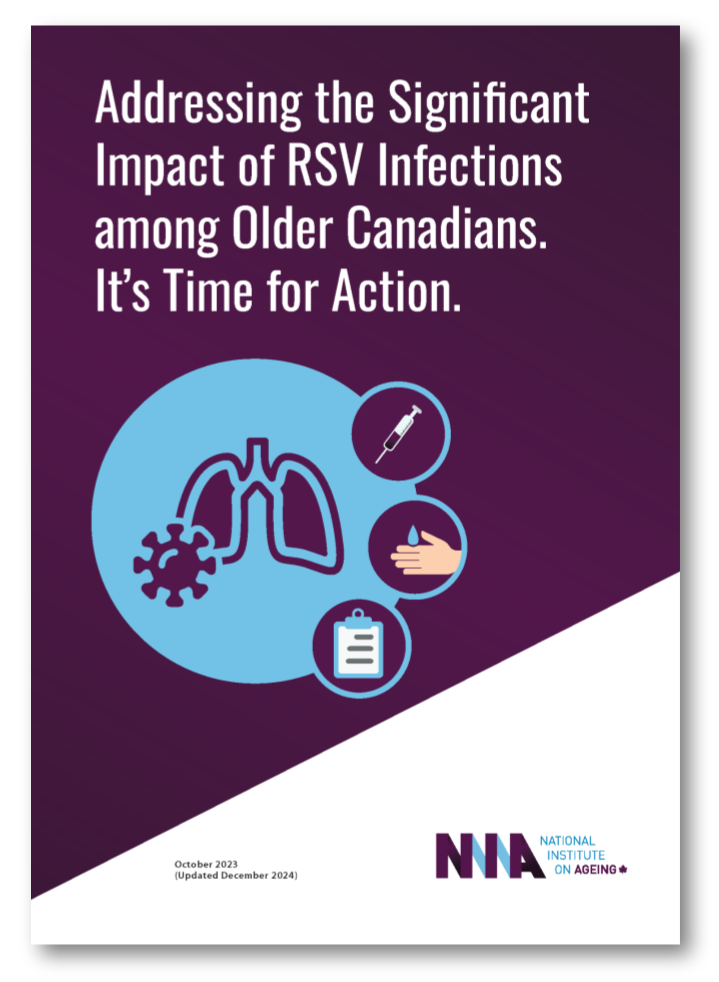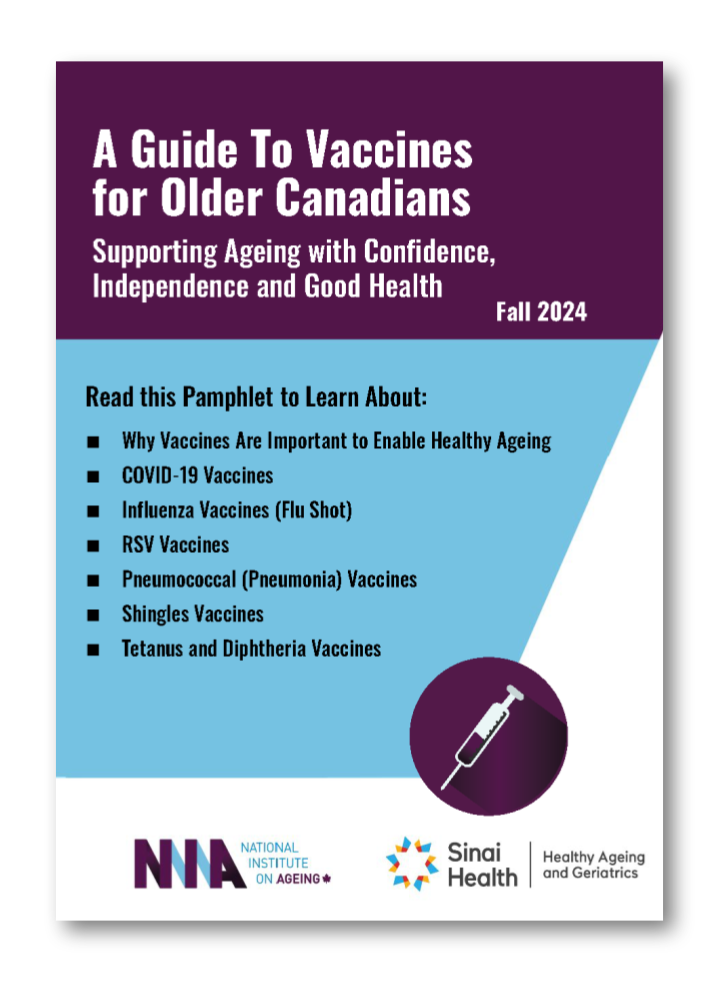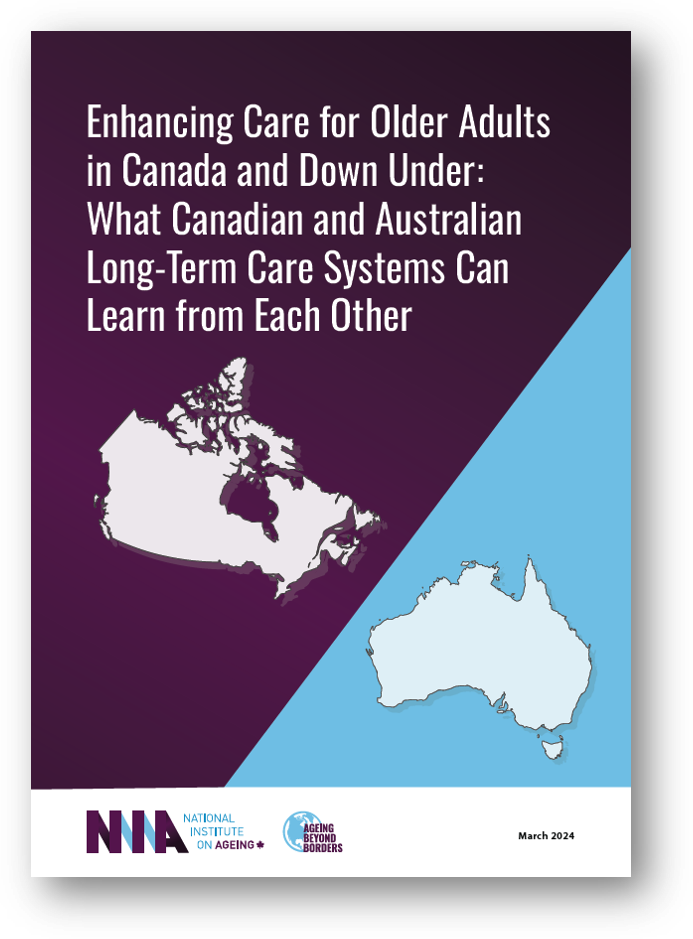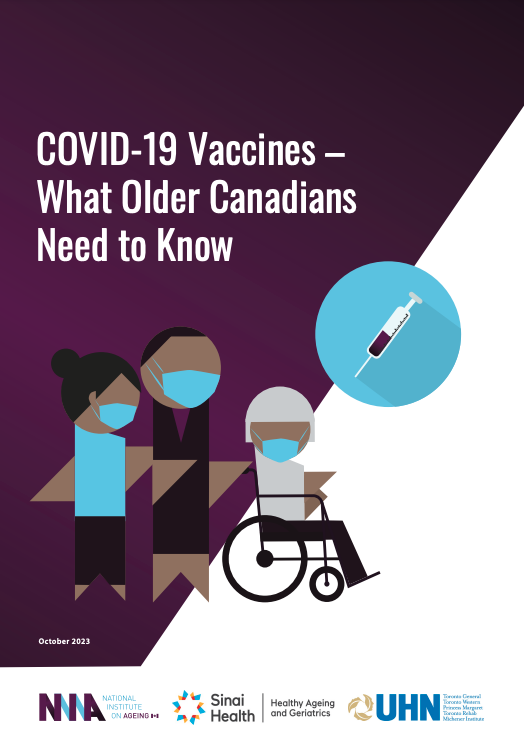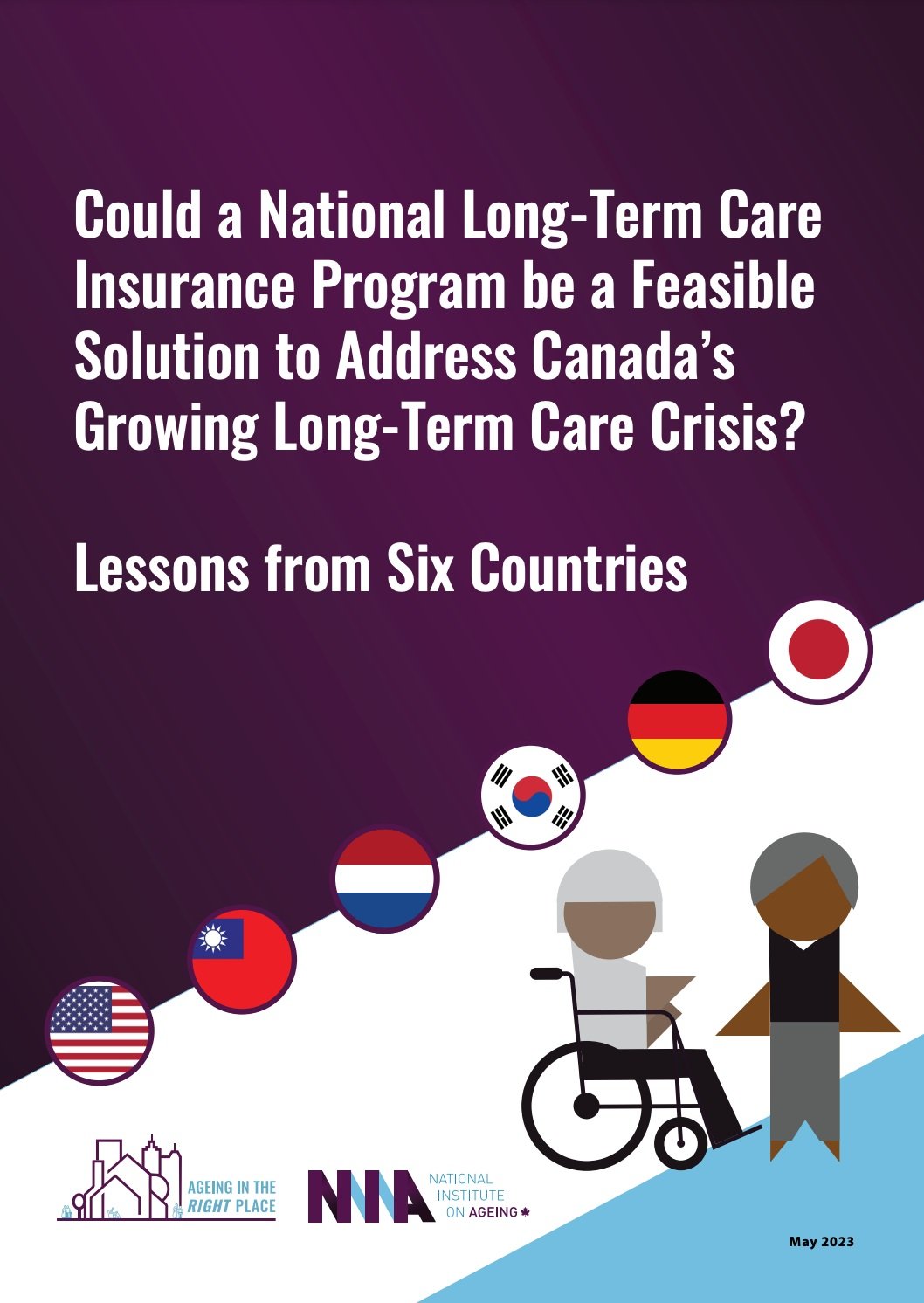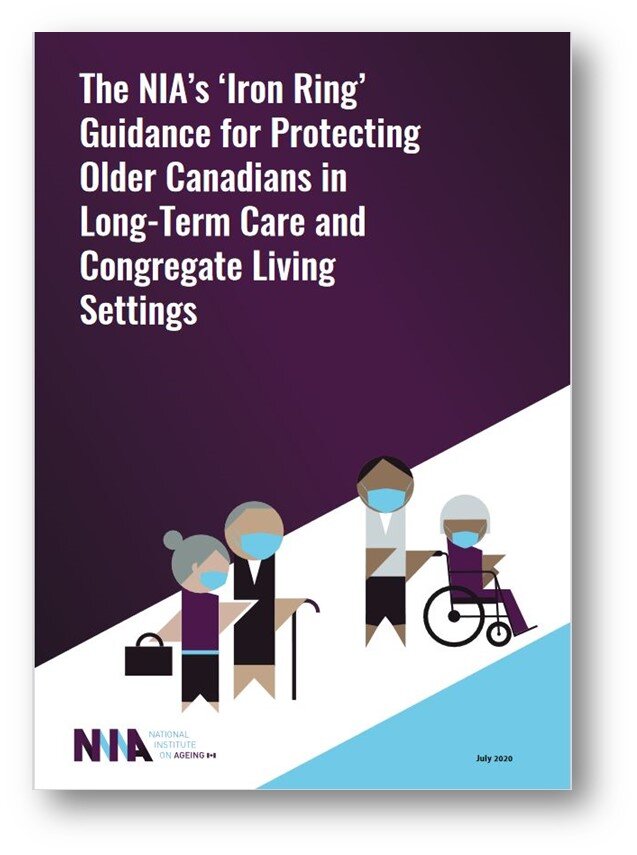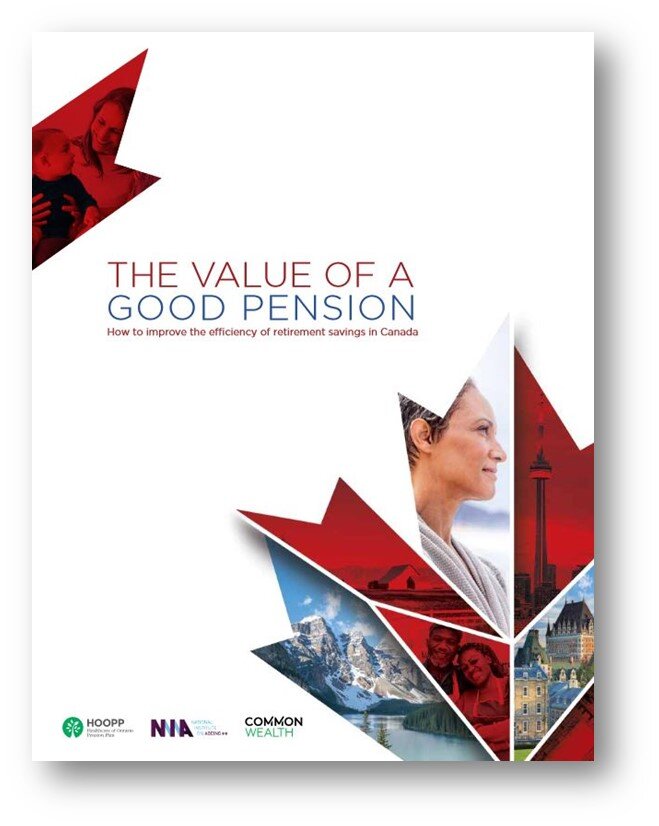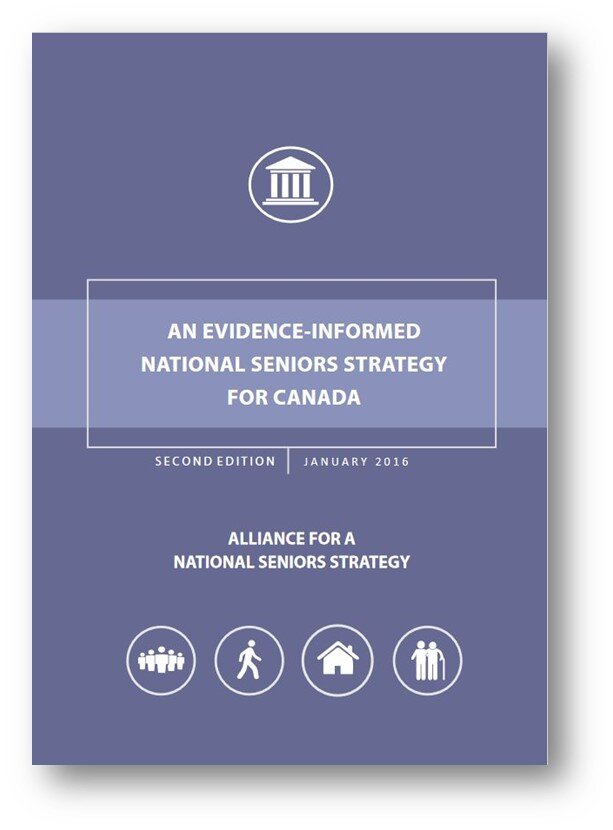The State of Caregiving Among Canadians 50+: A Public Policy
Half of all Canadians will be a caregiver at some point in our lives, yet it often goes unrecognized. Nearly 8 million Canadians provide care today for family members or friends facing health challenges, disabilities, or ageing-related issues. The reality? Caregivers contribute an estimated 5.7 billion unpaid hours each year — work valued at over $97 billion — but with little support.
The Canadian Centre for Caregiving Excellence (CCCE) warns that we are already living in a caregiving crisis. As caregivers age and fewer people are available to provide care, the demand is only increasing. Whether it’s helping with medical needs, household tasks, or simply offering emotional support, caregivers play a vital role—not just in the lives of their loved ones, but in keepingCanada’s healthcare system afloat.
CCCE has spent the last year working with caregivers, care providers, recipients of care, researchers, and leaders in every part of the country to develop a National Caregiving Strategy to address this problem. The NIA has been involved in this process from the beginning.
Perspectives on Growing Older in Canada: The 2024 NIA Ageing in Canada Survey
the National Institute on Ageing (NIA) published the findings of its 2024 Ageing in Canada Survey, the country’s largest ongoing research initiative focused on the perspectives and experiences of Canadians aged 50 and older. Now in its third year, the survey, in partnership with the Environics Institute for Survey Research, sheds light on the evolving realities of ageing in Canada, offering critical insights into the social well-being, financial security, and health of older adults.
There's No Place Like Home: Why Canada Must Prioritize Small Care Home Models in its Provision of Long-Term Care
There's No Place Like Home emphasizes the need for a transformative shift away from delivering care in large institutional care settings to smaller, more personalized, home-like environments that align with public preferences and improve care outcomes for residents and working conditions for staff.
7 Steps Toward Better CPP/QPP Claiming Decisions: Shifting the Paradigm on how we help Canadians
When to claim benefits from the Canada Pension Plan (CPP) — or its Quebec counterpart, the Quebec Pension Plan (QPP) — is one of the most important retirement financial decisions Canadians will make. This 8-part series aims to shift the paradigm toward more informed decision-making. Its purpose is simple: to propose new ways to help Canadians understand and benefit from the value of delaying CPP/QPP benefits.
Missing Pension Plan Members in Canada
The National Institute on Ageing (NIA) is proud to announce the release of a pivotal new report, Missing Pension Plan Members in Canada. The report addresses the significant issue of missing pension plan members, highlighting the challenges faced by plan administrators and individuals entitled to unclaimed pension benefits.
With Canada’s ageing population and the growing complexity of pension systems, the issue of missing pension plan members has become a serious concern. For plans registered in Ontario alone, nearly 200,000 pension plan members are considered missing, leaving behind $3.6 billion in unclaimed entitlements. The NIA's research sheds light on this issue and offers a range of solutions to help reunite Canadians with the retirement benefits they are rightfully owed.
Addressing the Significant Impact of RSV Infections among Older Canadians. It’s Time for Action.
Even though most children will experience their first respiratory syncytial virus (RSV) infection by the age of two, adults 65 years and older experience significantly more complications, with this age group having the highest mortality rate attributable to RSV infections. Three highly effective RSV vaccines for adults 60 years and older have been approved in Canada, however, a lot more work needs to be done as vaccination rates in this age group are underwhelmingly low.
A Guide to Vaccines for Older Canadians
The NIA’s Guide to Vaccines for Older Canadians pamphlet provides easy-to-understand and practical information about COVID-19, Influenza, RSV, Pneumococcal (Pneumonia), Shingles, Tetanus and Diphtheria, including the most recent recommendations from the Public Health Agency of Canada’s National Advisory Committee on Immunization (NACI). Furthermore, this updated Guide will be available in 18 languages over the coming weeks.
As One of Canada’s Top Killers, Why Isn’t Pneumonia Taken More Seriously?
Canada continues to fall short of its targets for vaccinating older adults against pneumonia, even though they are at higher risk of contracting this lung infection — and far more likely to die from it. In the updated version of its 2019 report: As One of Canada’s Top Killers, Why Isn’t Pneumonia Taken More Seriously? the National Institute on Ageing (NIA) finds that, unfortunately, despite the Public Health Agency of Canada’s (PHAC) goal of achieving 80% pneumococcal vaccination coverage for adults 65 and older, only 54.7% of this group had received the vaccine by 2023.
Addressing the Coming of Age and Its Related Complexities Among Canada’s Veterans
The National Institute on Ageing (NIA) in partnership with the Canadian Institute for Military and Veterans Health Research (CIMVHR) and the Canadian Frailty Network (CFN) has released a groundbreaking new report calling for the urgent development of a comprehensive strategy to support Canada’s ageing Veterans.
The report, Addressing the Coming of Age and its Related Complexities Among Canada’s Veterans, highlights our ageing Veteran population and the growing challenges they face, including complex physical and mental health conditions that require specialized care.
Health Care Access Among Older Canadians: Findings from the NIA’s Ageing in Canada Survey
As Canada's population continues to age, the demands on the health care system are intensifying. Based on data from the NIA’s 2023 Ageing in Canada Survey, a new report, Health Care Access Among Older Canadians, examines the challenges Canadians 50+ face in accessing health care services and the many ways the Canadian health care system is struggling to meet the complex needs of older adults.
Caring for an Ageing Korea
The policies and structures established to support South Korea’s ageing population offer an opportunity for Canada to observe and and learn from the impact of these national approaches. Discover the insights shaping the future of ageing with the latest report from the NIA’s Ageing Beyond Borders Series.
Enhancing Care for Older Adults in Canada and Down Under: What Canadian and Australian Long-Term Care Systems Can Learn from Each Other
Although located on opposite sides of the world, Canada and Australia share many demographic similarities and comparable challenges in meeting the growing demands for long-term care (LTC) services from their ageing populations with increasingly complex needs.
Discover the insights shaping the future of ageing with the Ageing Beyond Borders Series. In a this NIA report, several opportunities to improve the organization, governance, and delivery of LTC services in both Canada and Australia are identified.
Perspectives on Growing Older in Canada: The 2023 NIA Ageing in Canada Survey
The 2023 NIA Ageing in Canada Survey report by the NIA, in partnership with the Environics Institute for Survey Research, takes an in-depth look at the perspectives of growing older in Canada using a base sample of 5,875 Canadians. The survey is the largest of its kind in Canada and provides the first follow-up look at the perspectives and experiences of Canadians 50 and older across three key dimensions of ageing well — social well-being, financial security, and health and independence — since its inaugural launch last year.
Understanding the Factors Driving the Epidemic of Social Isolation and Loneliness among Older Canadians
The NIA’s survey report, Understanding the Factors Driving the Epidemic of Social Isolation and Loneliness among Older Canadians, warns that social isolation and loneliness are significant issues affecting the older population in Canada.
COVID-19 Vaccines - What Older Canadians Need to Know
The NIA’s COVID-19 Vaccines - What Older Canadians Need to Know pamphlet provides easy-to-understand and practical information about COVID-19 in 18 languages to inform and prepare older Canadians especially for the predicted ‘tripledemic’ coming this cold and flu season, and beyond.
Out of Sight, Out of Mind: Addressing the Invisible and Older Faces of Canada’s Opioid Crisis
As more attention is being paid to the opioid crisis in Canada, various responses have been launched in an attempt to curb some of these alarming trends. However, older adults have been largely left out of the conversation.With this report, the National Institute on Ageing (NIA) aims to raise awareness of the serious risks to older adults related to the opioid crisis, and to explain why this group will require particular attention in order to stem the crisis.
Bringing Long-Term Care Home: A Proposal to Create a Virtual Long-Term Care @ Home Program to Support a More Cost-Effective and Sustainable Way to Provide Long-Term Care Across Ontario
NIA Health Research and Policy Manager Dr. Ashley Flanagan and Associate Fellow Dr. Kristina Kokorelias have been shortlisted for the inaugural Hunter Prize for Public Policy. They are among 10 finalists selected from nearly 200 entries for their proposal to create a virtual long-term care (LTC) at-home program. The winners will be announced in September.
The NIA's Hunter Prize proposal on "Bringing LTC Home" explores compelling evidence and potential benefits of a Virtual Long-Term Care @ Home Program. Offering dedicated funding for teams of local care providers to flexibly deliver a mix of care and support services will allow more LTC-eligible individuals to live in their own homes longer and will reduce the need for LTC home admissions.
A National and International Jurisdictional Review and Comparative Analysis of Long-Term Care Home Legislation, Policies, Directives and Standards with HSO’s 2023 National Long-Term Care Services Standard
Earlier this year, Health Standards Organization (HSO) published a new National Long-Term Care Services Standard to provide guidance on the delivery of resident-centred, high-quality long-term care (LTC) services. The National Institute on Ageing (NIA), in collaboration with HSO, completed a national review taking stock of the policy and regulatory landscape at the provincial, territorial and federal levels.
Enabling a More Promising Future for Long-Term Care in Canada
Faced with a rapidly ageing population, staffing challenges and decades of funding shortfalls, long-term care systems in Canada require nothing less than a paradigm shift to remain viable into the future. This third and final report in the National Institute on Ageing (NIA) series outlines a road map for more sustainable, affordable and equitable long-term care systems.
We Don’t Ask, They Don’t Tell: Breaking the Silence to Address Incontinence in Canada
Incontinence is far more common than we think, affecting about a quarter of Canadian adults. But because of the stigma around it, older adults living with incontinence are unlikely to seek medical attention for it — and may face significant challenges, loneliness and financial stress as a result. Incontinence can also be a major barrier to ageing in the right place as it’s one of the most common triggers for being admitted to a LTC home in Canada.
Addressing the Silent Epidemic of Ageing with Diabetes in Canada
Despite the fact that older Canadians are more likely to be diagnosed with diabetes, and more likely to experience severe complications, health care and supports that account for their particular needs are sorely lacking in Canada. The National Institute on Ageing’s (NIA) report, calls for Canadian health care systems to adopt specialized strategies and supports to ensure that older Canadians living with diabetes, and their unpaid caregivers, don’t slip through the cracks.
Healthy Outcomes: Understanding the Impact of Adequate, Stable and Secure Retirement Income on the Ability of Canadians to Age Well and in the Right Place
More Canadians than ever are approaching traditional retirement ages in the coming years. However, without an adequate, stable and secure income in later life, many of them may not be able to Age in the Right place in good health and well-being. A new report from the National Institute on Ageing, completed with support from OMERS, sheds light on this critical issue and offers recommendations for how best to address it.
Where There’s a Will, There’s A Way: Exploring Canadian Perspectives on Estate Planning
A new report by the National Institute on Ageing (NIA) in collaboration with RBC Royal Trust finds that only 48 per cent of Canadians have a will; that number drops to 34 per cent for those aged 35-54. The report, looks at how well Canadians understand the importance of estate planning, whether they have taken steps to create an estate plan, and what’s stopping them from doing so if they haven’t already. It is based on a survey of 2,001 Canadians conducted by Ipsos in April 2022.
Could a National Long-Term Care Insurance Program be a Feasible Solution to Address Canada’s Growing Long-Term Care Crisis?
Could a national Long-Term Care (LTC) insurance program be a feasible solution to address Canada’s growing long-term care crisis? This National Institute on Ageing (NIA) report looks at lessons from six jurisdictions worldwide that have established public LTC insurance programs: Japan, Germany, South Korea, Taiwan, the Netherlands and Washington State.
Caring for an Ageing Australia
What can Canada learn from Australia about supporting its ageing population? To answer this question, the National Institute on Ageing (NIA) has published a new report called Caring for an Ageing Australia that explores the structural, logistical and financial aspects of Australia’s LTC and home-care systems, and how they relate to the country’s broader health-care and social security supports. This is the first in a series of reports looking at how other countries are trying to meet the needs of their ageing populations, as part of the NIA’s Ageing Beyond Borders research series.
National Long-Term Care Services Standard Public Engagement “What We Heard” Reports
On January 31, 2023, Health Standards Organization (HSO) proudly announced the publication of its new National Long-Term Care Services Standard, recognized by the Standards Council of Canada as its latest National Standard of Canada.
The NIA was proud to support the development of the standard by conducting dozens of evidence reviews, analyzing public input and translating it into three What We Heard reports, and having our Director of Health Policy Research serve as chair of the HSO Technical Committee whose new standard will now serves as the basis for Accreditation Canada and Healthcare Excellence Canada’s future work in supporting Canada’s long-term care (LTC) homes.
What We Heard Report #1: Findings from HSO’s Inaugural National Survey on Long-Term Care
What We Heard Report #2: Findings from HSO’s National LTC Standard Consultation Workbooks and Town Halls
What We Heard Report #3: Findings from HSO’s Public Engagement in the Development of a New National Long-Term Care Services Standard
Special Delivery: How Canadian Postal Workers Could Better Enable Ageing in the Right Place
Supporting Canada’s growing population of older adults looking to live in their own homes and communities for as long as possible will require new ways of thinking about how to efficiently deliver home and community care services. One option Canada should further consider is turning to an organization that already knows a thing or two about making home visits: Canada Post.
Perspectives on Growing Older in Canada: The 2022 NIA Ageing in Canada Survey
In less than 10 years, one-quarter of Canada’s population will be aged 65 years and older. Adequately understanding the circumstances and evolving needs of this ageing population requires collecting regular and reliable data from older Canadians themselves. The National Institute on Ageing (NIA) and the Environics Institute for Survey Research partnered on an annual survey of ageing in Canada to track, over the next decade, how Canadians feel about both their experience and expectations of growing old in Canada. The survey captures older Canadians’ perspectives across three dimensions of ageing: social well-being, financial security, and health and independence. It does so with 10 key indicators that when analyzed annually, will make it possible to measure progress — or setbacks — over time across these three dimensions of ageing.
A Goal Within Our Reach: What the COVID-19 Pandemic has Taught Us about Improving the Uptake of Influenza Vaccinations in Canada
Every year, seasonal influenza causes one billion infections, between three and five million cases of severe illness, and between 290,000 and 650,000 deaths worldwide. In Canada, influenza causes an estimated 175,000 emergency department visits, 12,200 hospitalizations and 3,500 deaths every year, and is one of the country’s top causes of death. Together with pneumonia, influenza currently ranks as the eighth leading cause of death in Canada, and before the COVID-19 pandemic, it was Canada’s leading vaccine-preventable cause of death. The basis of this report is a survey developed by the NIA to gain critical insights into Canadians’ perspectives and behaviours around influenza vaccination.It’s Time to Unleash the Power of Naturally Occurring Retirement Communities in Canada
Supporting older Canadians to age in the right place will require innovative housing models and infrastructure that can support their independence, safety, health and social wellbeing. This report examines one such model: Naturally Occurring Retirement Communities (NORCs). To begin with, there is a difference between a NORC and a NORC program. The original concept of NORCs was coined by Hunt & Gunter-Hunt in 1986, and refers to communities that over time may naturally come to house a high density of older adults. In the absence of an agreed-upon definition of NORC parameters, the NIA and NIC further propose that NORCs may also include communities that were designed to house a large concentration of older adults (e.g. aged 55-plus apartment buildings, rent-geared-to-income housing or other communities for older people) but were not purpose-built to provide care for older adults in the way that retirement homes, assisted living facilities or LTC homes were.
Ageing in the Right Place: Supporting Older Canadians to Live Where They Want
Supporting older adults to age in their own homes and/or communities for as long as possible, commonly referred to as “ageing in place,” can help Canada’s already-strained LTC systems. Yet doing so effectively also requires responsive systems and services that can enable what the NIA calls “Ageing in the Right Place.” Recognizing the growing importance of supporting older Canadians’ ability to age successfully while remaining engaged members of their communities, this report aims to present a practical definition and framework to understand what ageing in the right place (AIRP) is and what is required to make it work. It also highlights existing best practices and opportunities that can reduce unnecessary LTC home admissions and better support the implementation of successful AIRP policies and programs across Canada and beyond.
Counting COVID-19 in Canada's Long-Term Care Homes: NIA Long-Term Care COVID-19 Tracker Summary Report
In March 2020, as the COVID-19 pandemic began to intensify around the world, experts and front-line workers sounded the alarm about its potential impact on older populations. The NIA reacted quickly by establishing the Long-Term Care COVID-19 Tracker Open Data Working Group and developing the NIA Long-Term Care COVID-19 Tracker: a web-based mapping system that could track outbreaks across 6,029 long-term care (LTC) and retirement homes in every Canadian province and territory, including the number of cases and deaths among staff and residents.Understanding Social Isolation and Loneliness Among Older Canadians and How to Address It
Social isolation and loneliness are increasingly recognized as important public health concerns. Globally, as well as in Canada, these issues have significant implications for the health and well-being of older persons. Older adults are at increased risk of experiencing social isolation and loneliness, and are especially vulnerable to their negativeimpacts. With older persons making up a rapidly growing proportion of Canada’s population, the number of either isolated or lonely older adults is also expected to increase, meaning that both the individual and societal consequences of loneliness and social isolation are expected to become more severe.Coming Out and Coming in to Living with Dementia: Enhancing Support for 2SLGBTQI People Living with Dementia and their Unpaid Carers
What are the unique experiences and needs of Two Spirit, lesbian, gay, bisexual, transgender, queer, and intersex (2SLGBTQI) people living with dementia and those who care for them? In this report, Egale and NIA share the findings from their national qualitative research study that engaged 2SLGBTQI community members living with dementia, primary unpaid carers of 2SLGBTQI PLWD, and community group representatives, and dementia care and service provider stakeholders.The Overlooked Issue of Shingles Infections in Older Canadians, And How to Address It!
Shingles infections affect an estimated 90,000 Canadians aged 50 years and over each year, and cost the health care system approximately $67-82 million. Despite its prevalence—particularly among older adults—and the risk of serious health complications, only 27% of Canadians aged 50 years and over report having a shingles vaccine, according to the Public Health Agency of Canada. The following report reveals a patchwork approach to shingles vaccination across the country, which does not adequately address the prevalence, seriousness or costs of the disease, and outlines eight evidence-informed policy recommendations.Lessons Learned: What Successful COVID-19 Immunization Efforts Taught Us About Improving Vaccine Coverage Among Older Canadians for Other Vaccine-Preventable Diseases
Each year, preventable illnesses like influenza, shingles and pneumococcal disease (a common cause of pneumonia), cause thousands of avoidable and unnecessary deaths across Canada, particularly among older adults. Known as the “Big 3,” these illnesses pose acute risks for older Canadians, who are at a higher risk of serious health outcomes. The good news is, there is a solution. In a new report, the National Institute on Ageing shows how best practices developed for COVID-19 immunization efforts can be applied to increase vaccine uptake among older adults for influenza, shingles and pneumococcal disease.Affordable Lifetime Pension Income for a Better Tomorrow: How We Can Address the $1.5-trillion Decumulation Disconnect in the Canadian Retirement Income System with Dynamic Pension Pools
A new report published by the National Institute on Ageing (NIA) and the Global Risk Institute (GRI), explains why Dynamic Pension (DP) pools are urgently needed to make retirement income security possible for millions of Canadian seniors. With 10 million baby boomers now entering retirement—with longer life expectancies and a greater dependency on private savings to sustain them—it’s more important than ever to find solutions that will help retiring Canadians turn their accumulated savings into low-cost lifetime pension income. DP pools are already recognized as a powerful decumulation solution in other ageing countries around the world; however, they aren’t broadly available in Canada today. The report provides guidance on how to remove unnecessary obstacles and clear the path for this important solution.Canadian Perspectives on the Financial Realities of Ageing in Place
The COVID-19 pandemic has left most Canadians feeling concerned about the financial security and well-being of their families today and in the future. The level of worry is particularly acute for Canadians close to retiring or in early retirement. A new report released by the National Institute on Ageing, in collaboration with HomeEquity Bank, shows that 75% of adults say the pandemic has made them more concerned about their family’s financial security and well-being. For those nearing or in early retirement, 77% expressed worry about their financial health, as well as 79% of women. These findings come at a time when an increasing number of older Canadians say they intend to age at home for as long as possible. But, with a lack of adequate public funding for homecare, Canadians and governments will need to take active steps to close the gap between the desire to age at home and the finances required to do so.A Cautionary Tale: Canada's COVID-19 Vaccine Rollout for Older Canadians
Canada's lack of national coordination, inconsistent prioritization of older Canadians, and failure to focus on speed in its provincial COVID-19 vaccine rollouts, cost potentially hundreds of older lives across the country. Between April and June 2021 alone, the deaths of more than 350 older adults in Ontario could have been prevented with earlier administration of second doses of COVID-19 vaccines. A new report published by the National Institute on Ageing (NIA) — A Cautionary Tale: Canada’s COVID-19 Vaccine Rollout for Older Canadians — shows that well-planned, comprehensive vaccine rollout plans save lives. And we can start applying these lessons in Canada today and in other countries around the world whose COVID-19 vaccine rollouts are underway or have yet to begin.Leaving No One Behind in Long-Term Care: Enhancing Socio-Demographic Data Collection in Long-Term Care Settings
A new report from the National Institute on Ageing and Wellesley Institute shows that, due to a lack of data, we still do not have a full picture of the impacts of the pandemic in Canada's long-term care homes. While COVID-19 has taken a disproportionate toll on Canada's most vulnerable populations, a long-standing failure to collect socio-demographic data in LTC settings, means that inequitable effects of the pandemic on residents and workers may remain unaccounted for and, as a result, in adequately addressed. Without effective solutions, vulnerable populations within long-term care systems could continue to be at risk of inequitable health outcomes and access to care issues.After the Shot: Guidance Supporting the Re-opening of Canada’s LTC Homes Following COVID-19 Vaccination
During the COVID-19 pandemic’s first and second waves, restrictions were implemented in long-term care (LTC) homes to protect residents and staff. Today, however, the landscape has changed. Comprehensive vaccination coverage has been achieved in the LTC sector and it is time to reassess restrictions. To support homes to re-open safely, the National Institute on Ageing has released a new guidance report that outlines re-opening policy guidance recommendations across ten areas.If Older Canadians Want a COVID-19 Vaccine, Why Is Canada Struggling to Get Them Vaccinated?
Older Canadians continue to experience the highest risk of serious illness and death as a result of COVID-19. They are also the most willing to be vaccinated. However, reports across the country reveal growing, and potentially deadly, gaps between the number of older adults who want the vaccine and those who have been vaccinated.A new report released by the National Institute on Ageing (NIA) shows that low uptake of COVID-19 vaccines among older Canadians is not due to lack of demand or supply, but rather is a matter of access. It proposes five policy recommendations that would support provincial and territorial governments to deliver vaccines more quickly and equitably to older Canadians and save the most lives.
The Impact of COVID-19 on Long-Term Care in Canada Focus on the First 6 Months
A new report released by Canadian Institute for Health Information (CIHI), in partnership with the National Institute on Ageing shows COVID-19 cases among residents of long-term care (LTC) and retirement homes increased by more than two-thirds during Wave 2 compared with Wave 1.
The report shows that new protocols implemented during the first wave to limit the spread of COVID-19 resulted in unintended consequences for residents in LTC homes and that residents had fewer physician visits and hospital transfers in the first wave, in the provinces where it could be measured.
Pandemic Perspectives on Long-Term Care: Insights from Canadians in Light of COVID-19
The National Institute on Ageing (NIA) and the Canadian Medical Association (CMA) released the findings of an online national survey gauging the perspectives of 2,005 Canadians on how the second wave of the pandemic has impacted the state of Canada's long-term care (LTC) systems. The survey report, Pandemic Perspectives on Long-Term Care: Insights from Canadians in Light of COVID-19, shows that the majority of all Canadians (86 per cent) surveyed - and 97 per cent of Canadians aged 65 years and older - are concerned about the current state of LTC in Canada.
The NIA’s Recommended ‘Titanium Ring’ for Protecting Older Canadians in Long-Term Care and Congregate Living Settings
The National Institute on Ageing (NIA) released the 3rd edition of its COVID-19 expert guidance report titled, The NIA’s Recommended ‘Titanium Ring’ for Protecting Older Canadians in Long-Term Care and Congregate Living Settings. This 3rd edition of the NIA’s expert guidance was released in the spring of 2020 as the ‘Iron Ring’. Renamed as ‘Titanium Ring’, the updated guidance suggests stronger measures are necessary to better protect residents and staff in long-term care (LTC) settings during the rapidly evolving circumstances of the pandemic.Literature Review: LGBTQI2S People Living with Dementia and their Unpaid Caregivers Across Canada
Recognizing the gap in current understandings of living and/or caring within the intersections of LGBTQI2S identities and dementia, in 2020 Egale Canada and the National Institute on Ageing at Ryerson University teamed up to conduct national research into the experiences of LGBTQI2S people living with dementia, and primary unpaid caregivers of LGBTQI2S people living with dementia.
The literature review can also be found on Egale’s website here: https://egale.ca/research-hub/#DementiaLR
Closing the Gaps: Advancing Emergency Preparedness, Response and Recovery for Older Adults
The Closing the Gaps: Advancing Emergency Preparedness, Response and Recovery for Older Adults report, authored by Dr. Samir Sinha, Director of Health Policy Research at the NIA, shows that older Canadians consistently experience the greatest proportion of casualties during and after disasters in Canada.
Prepared in collaboration with the Canadian Red Cross (CRC), the report notes that COVID-19 is not unique in its disproportionate effect on older Canadians. In 2010, more than half of all deaths resulting from heat waves in Quebec were among persons aged 75 years or older.
Get the Most from the Canada & Quebec Pension Plans by Delaying Benefits
When to claim benefits from the Canada Pension Plan (CPP) – or its Quebec counterpart, the Quebec Pension Plan (QPP) – is an important financial decision for retiring Canadians. With an ageing population and widespread concern that Canadians are inadequately prepared for retirement, it is critical that retiring workers understand how to get the most from the CPP/QPP program. For Canadians in reasonable health who can afford to wait, that often means delaying the start of their CPP/QPP benefits for as long as possible.Bringing Long-Term Care Home: A Proposal to Create a Virtual Long-Term Care @ Home Program to Support a More Cost-Effective and Sustainable Way to Provide Long-Term Care Across Ontario
The provision of long-term care is at crossroads in Ontario. The current COVID-19 pandemic has brought to light not only some of the system’s pre-existing systemic vulnerabilities, but has also exacerbated its capability to serve more people in need of long-term care services. This paper proposes that the Government of Ontario’s Ministries of Health and Long-Term Care collaborate to enable the creation of a Virtual Long-Term Care @ Home Program.
Pandemic Perspectives on Ageing in Canada in Light of COVID-19: Findings from a National Institute on Ageing/TELUS Health National Survey
The COVID-19 pandemic has been having a disproportionate effect on the health and well-being of older Canadians. Approximately, 80% of COVID-19 deaths in Canada have occurred amongst older Canadians in long-term care settings like nursing and retirement homes. For the majority of older Canadians who live in their own homes, concerns about social isolation, receiving appropriate and timely care, and maintaining one’s independence have heightened in part due to recommended restrictions on non-essential social interactions, which are expected to persist to some extent for the foreseeable future.
Finding the Right Balance: An Evidence-Informed Guidance Document to Support the Re-Opening of Canadian Long-Term Care Homes to Family Caregivers and Visitors during the COVID-19 Pandemic
Long-term care (LTC) or nursing homes have experienced the worst of the coronavirus disease 2019 (COVID-19) pandemic in Canada, with residents of these homes accounting for approximately 80% of Canadian COVID-19 deaths. In reviewing the literature, consulting with national and international experts, and hearing from both residents, and their family caregivers and visitors through various forums, we have identified six core principles and planning assumptions as foundational and fundamental to any current and future guidelines. These recommendations focus on family caregivers and general visitors rather than essential support workers and LTC home staff, and are made with the acknowledgement that the approach to visiting may need to be dynamic based on the community prevalence of COVID-19.
The NIA’s Recommended ‘Iron Ring’ for Protecting Older Canadians in Long-Term Care and Congregate Living Settings
Older Canadians are more likely to die from COVID-19. Their advanced ages, higher likelihood of living with multiple chronic conditions, including dementia, and weaker immune systems all contribute to their greater risk of death. The term ‘Iron Ring' recently became popularized in Ontario to indicate the collective actions that the province would take to protect residents of long-term care and retirement homes. Through the leadership of Dr. Samir Sinha, the NIA’s Director of Health Policy Research, the NIA has been keeping abreast of rapidly emerging international evidence on how best to prevent and manage the introduction and spread of COVID-19 amongst both residents and care providers in these settings. This has positioned the NIA to quickly provide governments, long-term care providers, and the public the evidence-based recommendations that can be quickly and effectively implemented to better inform policies and strategies to address COVID-19. The NIA’s overall “Iron Ring” guidance will be continually updated as the evidence-base around COVID-19 evolves to further inform expert interpretations. We will also continually provide updates on how Canada’s provincial, territorial and federal governments remain aligned with the NIA’s recommended best practices.National Seniors Strategy 2020 Report
The way we approach our coming of age will also require coordination and mobilization across government departments as well as between the private and public sectors. Indeed, many are now seeing the need for an integrated approach where the federal government could help keep us all moving in the right direction. As a result, many see that implementing a National Seniors Strategy could provide us exactly the focus and commitment we need to ensure Canada can become the best country to grow up and grow old in.
Special Report: Ageing Well: Policy Implications of Changing Demographics and Increasing Longevity in UK and Canada
In November 2019, the NIA joined some of the foremost experts on ageing in Canada and the UK met at Cambridge University in the UK to discuss the challenges of ageing well. This report by Professor Ashwin Kumar from the Canada-UK Colloquium looks at the findings on ageing in Canada and the UK, sets out the main points made in the discussions, and the recommendations that emerged.
Improving Canada’s Retirement Income System
This discussion paper on Canada’s retirement income system, authored by Keith Ambachtsheer and Michael Nicin, identifies the key challenges and opportunities to addressing and improving retirement prospects for Canadians. The paper outlines three broad priorities: 1) Increase pension coverage for Canadians without a pension plan; 2) Increase savings rates for middle-income earners; 3) Increase incentives and opportunities for people to work at older ages, as life expectancy increases.
The Future Co$t of Long-Term Care in Canada
This second paper in the NIA’s 2019 policy series on the future of long-term care by Dr. Bonnie-Jeanne MacDonald, Dr. Michael Wolfson, and Dr. John Hirdes, builds on Statistics Canada’s population microsimulation model to project the future costs of long-term care in Canada to both the public purse as well as the care support provided to Canadian seniors by their families.
Enabling the Future Provision of Long-Term Care in Canada
This inaugural paper in the NIA’s 2019 policy series on the future of long-term care explores the current landscape of the full range of long-term care services across Canada to determine how Canadians can be best supported to age with greater quality of life, better health outcomes, and dignity through appropriate models of care and support and best practices.
Filling the Cracks in Pension Coverage: Introducing Workplace Tax-Free Pension Plans
This paper proposes workplace Tax-Free Pension Plans (TFPPs) as an option for improving pension plan coverage in Canada.
Special Report: The Value of a Good Pension - How to Improve the Efficiency of Retirement Savings in Canada
Retirement is one of life’s biggest expenses. Yet while there has been vigorous debate about whether Canadians are saving enough for retirement, there has been much less discussion of how they are saving. This study compares the efficiency of a variety of approaches to retirement, from a typical individual approach to a large-scale “Canada model” pension plan, as well as a variety of models in between. This study is a research project completed by Common Wealth for the Healthcare of Ontario Pension Plan (HOOPP), with support from the NIA.
Special Report: Toronto Social Capital Study
“Social capital” is the term used to describe the vibrancy of social networks and the extent to which there is trust and reciprocity within a community and among individuals. The NIA partnered with the Toronto Foundation and other leading civic organizations on a new research initiative led by the Environics Institute to map the level of social trust and community engagement among Toronto residents, and provide a foundation for strengthening the social capital of the city.
We Can’t Address What We Don’t Measure Consistently: Building Consensus on Frailty in Canada
More than 1 million Canadians are living with frailty, but there is no agreement among health care providers on how to measure it. The NIA examines the impact of frailty in Canada, and urges for research and health care communities to build consensus on how to measure and manage it.
Why Canada Needs to Better Care for Its Working Caregivers
More than 8 million Canadian caregivers are keeping our health care systems afloat, 30 per cent of whom are “sandwich generation” women.
The Underappreciated Burden of Influenza Amongst Canada’s Older Population. And What We Need to Do About It.
Fewer than a third of all Canadians get the flu vaccine each year and fewer than two-thirds of seniors get the vaccine. Canada is falling far short of the immunization rates needed to protect the broader population, according to a report by the National Institute on Ageing, updated in January 2022.An Evidence-Informed National Seniors Strategy for Canada
The way we approach our coming of age will also require coordination and mobilization across government departments as well as between the private and public sectors. Indeed, many are now seeing the need for an integrated approach where the federal government could help keep us all moving in the right direction. As a result, many see that implementing a National Seniors Strategy could provide us exactly the focus and commitment we need to ensure Canada can become the best country to grow up and grow old in.





